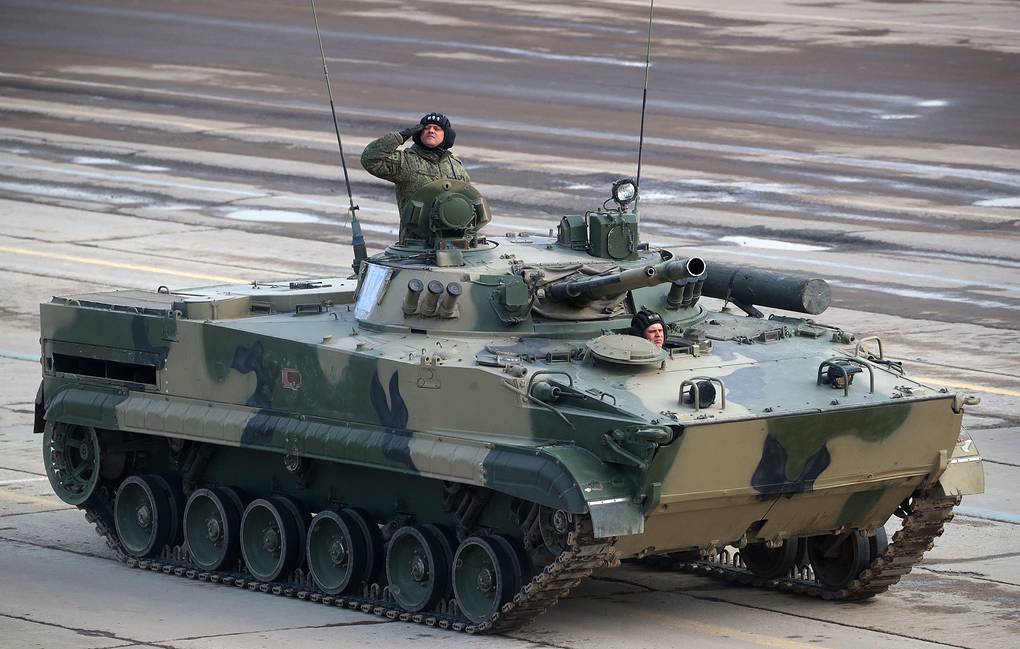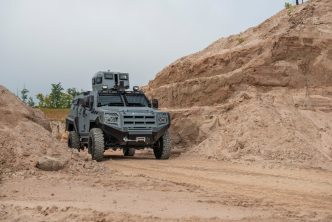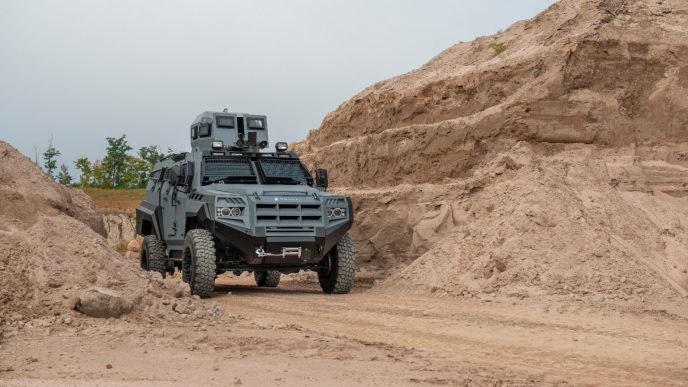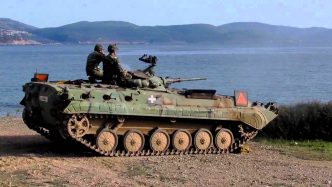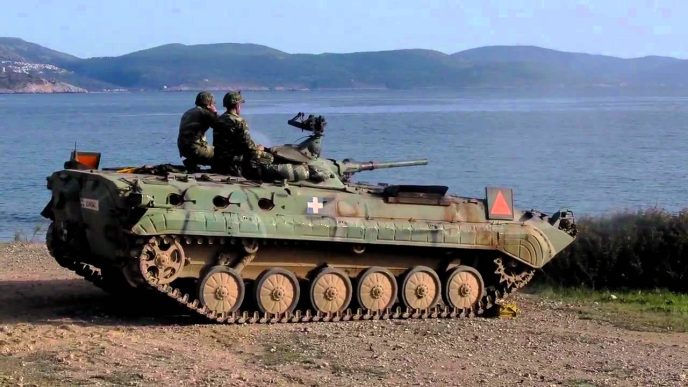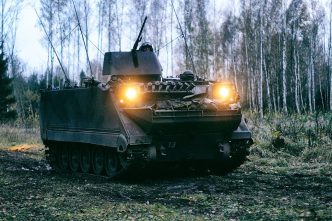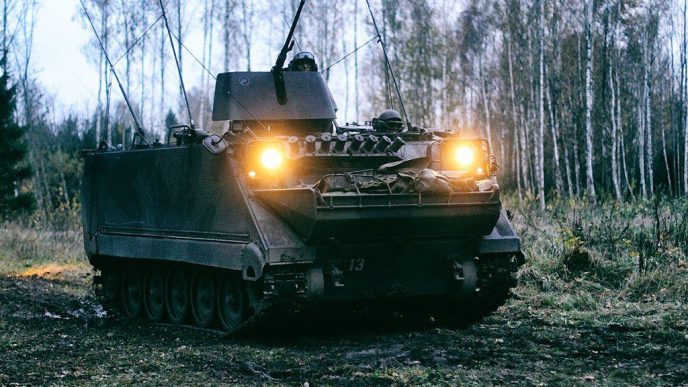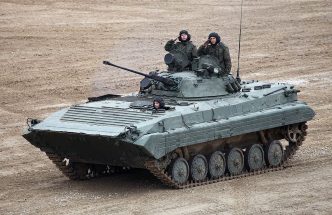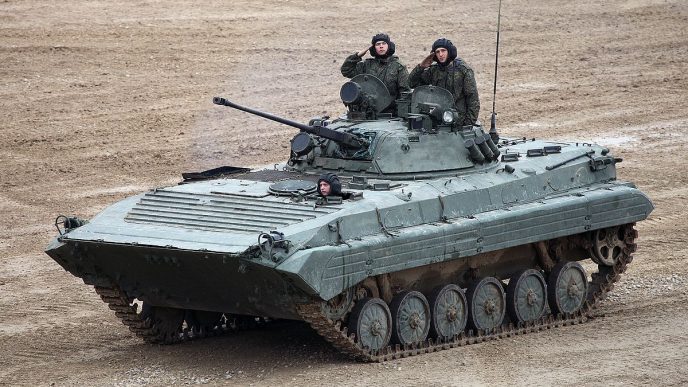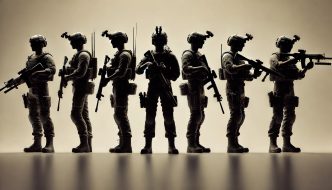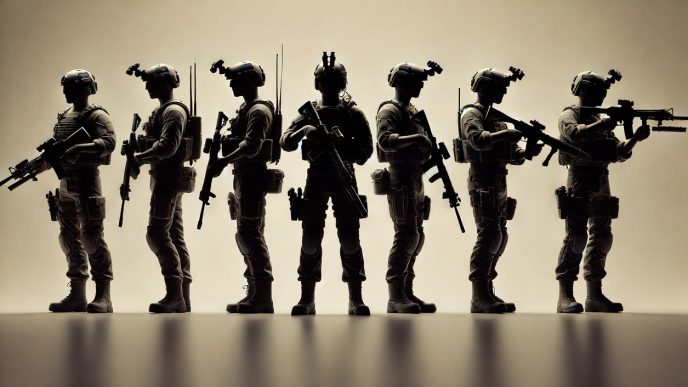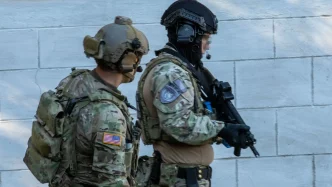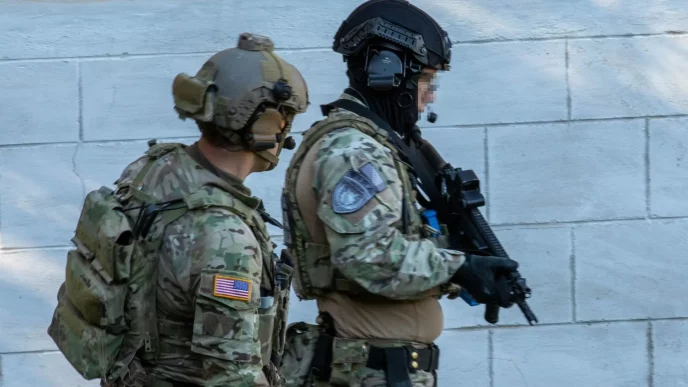BMP-3 is a Soviet and Russian armored combat-tracked vehicle designed to transport personnel to the front line and increase its mobility, armament, and defense in the context of nuclear weapons and joint operations with tanks in battle.
Introduction
BMP-3 stands for Boevaya Mashina Pehoty 3 (Infantry Combat Vehicle 3), a successor to the BMP-1 and BMP-2. The Kurgan Special Design Bureau of Mechanical Engineering developed it. BMP-3 is produced at OJSC Kurganmashzavod. It was first publicly demonstrated in 1990 at the Parade in honor of the 45th anniversary of Victory in the Great Patriotic War.
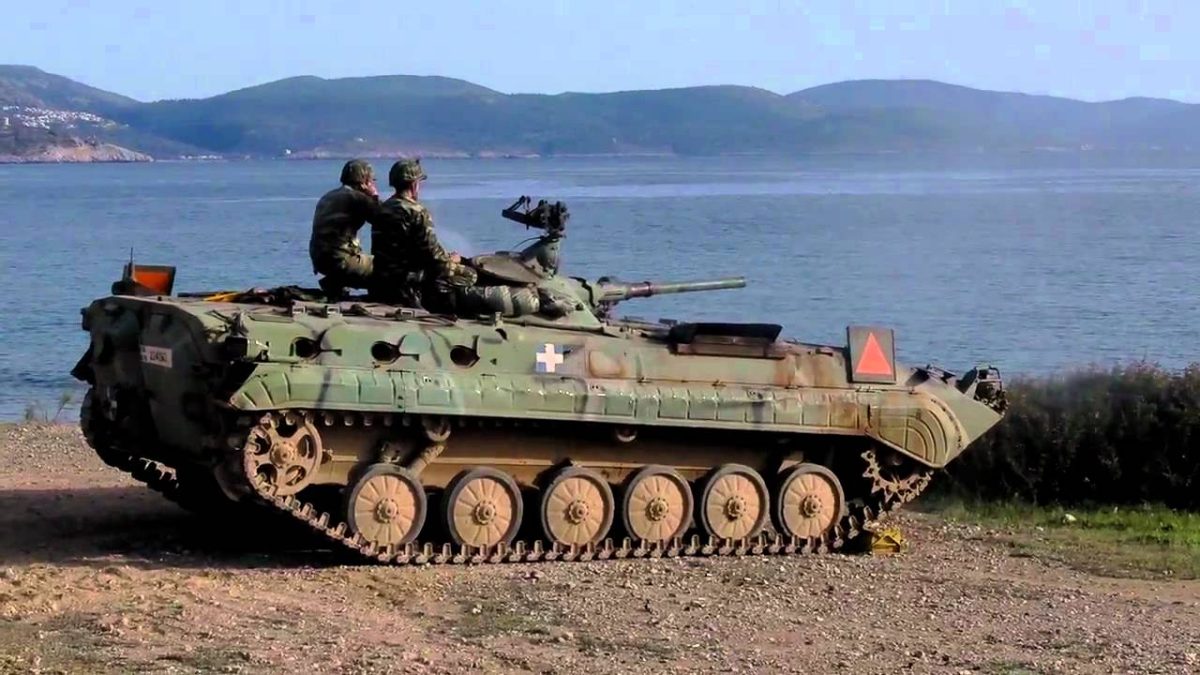
SSSR launched the development of the BMP-3 (“Object 688M”) in 1977. From 1983 to 1986, tests were carried out, and in 1987 it was adopted by the Soviet Army. During state tests in Cape Opuk, the 2 BMP-3 prototypes were supposed to fire afloat at a distance of up to 1,500 m from coastal targets from a 30-mm automatic gun.
The target was the T-55 tank; as a result, the sight and tank observation devices were disabled, a 100-mm gun was pierced in 4 places, and fractures with cracks appeared on the upper frontal part. The design of the BMP-3 introduced 111 inventions and patents of specialists of the Special Design Bureau of Mechanical Engineering.
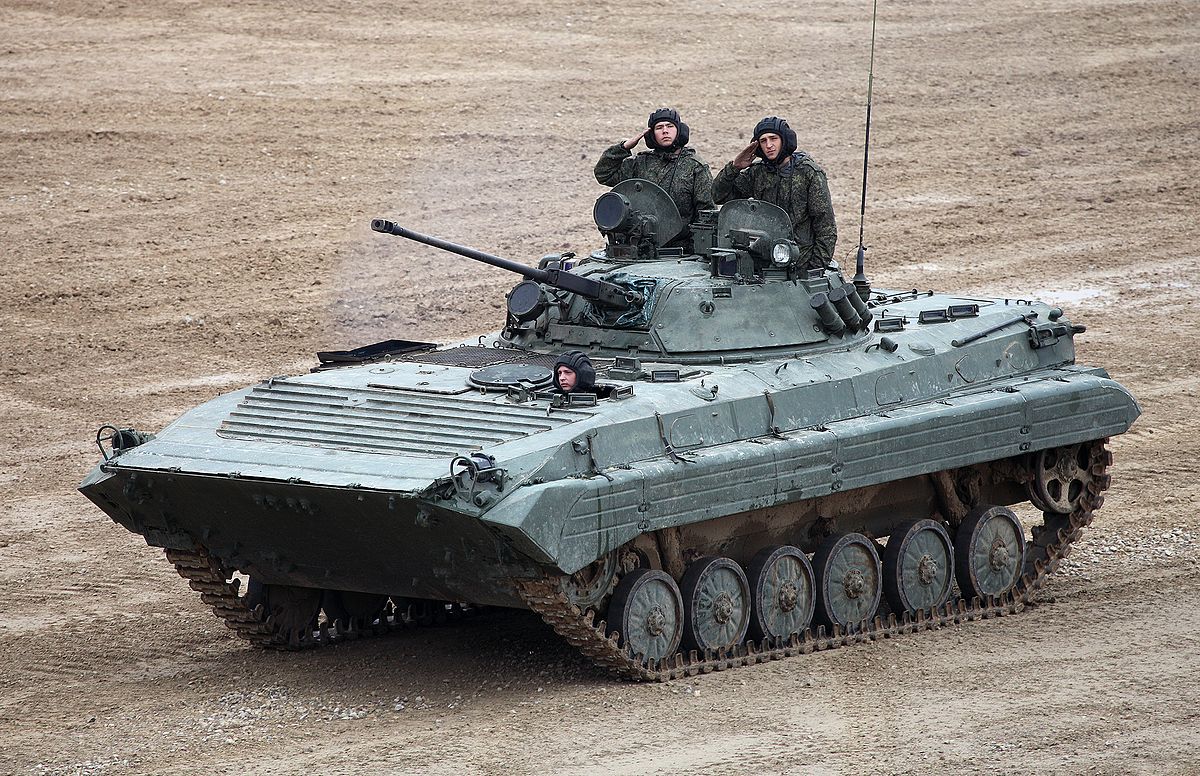
Key recognition features
- Large box-type hull with almost horizontal glacis plate, nose slopes back under front of the hull, vertical hull siders rear with two small doors in the hull rear. Mounted on either side of the hull front is a 7.62 mm machine gun firing forwards
- The circular turret in the center of the hull with two hatches, over the frontal 180 degrees of the turret is another layer of armor, a long-barreled 100 mm gun with 30 mm cannon mounted coaxially to the right, distinctive box over the rear of the main armament.
- Suspension on either side has six road wheels with an idler at the front, a drive sprocket at the rear, and three track-return rollers, the upper part of the track covered by a light steel cover similar to that on BMP-1 and BMP-2.
Development
The BMP-3 was developed to meet the requirement of the Russian Army and was first seen in public during a parade held in Moscow in 1990. Within NATO, it has been referred to as the Soviet Infantry Fighting Vehicle (SIFV) M1990/1.
The driver is seated at the front of the vehicle in the center with an additional crew member to his left and right, all three provided a single-piece hatch cover. The two-man turret is in the hull’s center, with the commander seated on the right and the gunner on the left, both with a roof hatch. The main armament consists of a 100 mm rifled gun that, in addition to firing conventional ammunition, also fires a laser-guided ATGW, which has NATO designation of the AT-10.
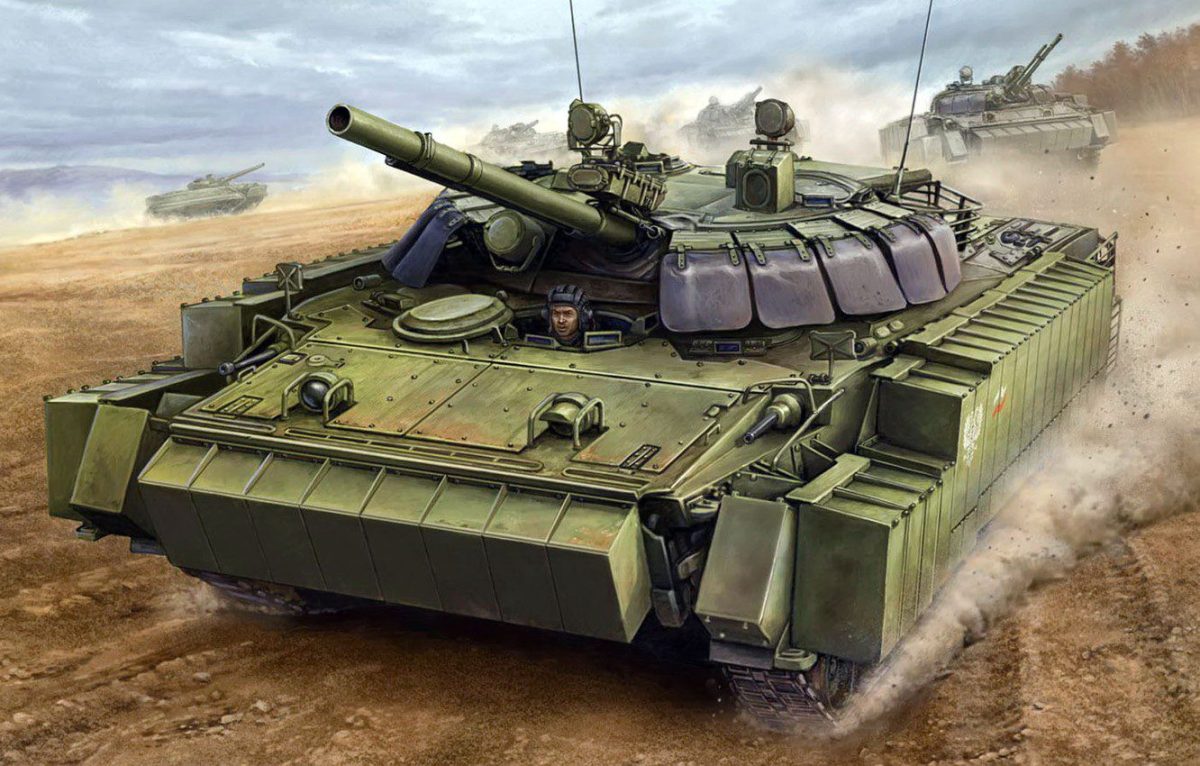
Mounted to the right is a 30 mm cannon attached to the 100 mm gun. In addition, a 7.62 mm machine gun is mounted to the right of the 30 mm cannon, with another 7.62 mm machine gun being mounted in the front of the hull firing forwards. A total of seven infantrymen are carried, one on either side of the driver, with the remainder seated to the turret’s sides and rear.
The engine is located at the rear of the vehicle on the right side, with the fuel tanks under the floor. The small troop compartment at the rear of the BMP-3 is provided with roof hatches and two doors in the rear that open outwards. As the floor of the troop compartment is so high from the ground, steps unfold as the rear doors are opened.
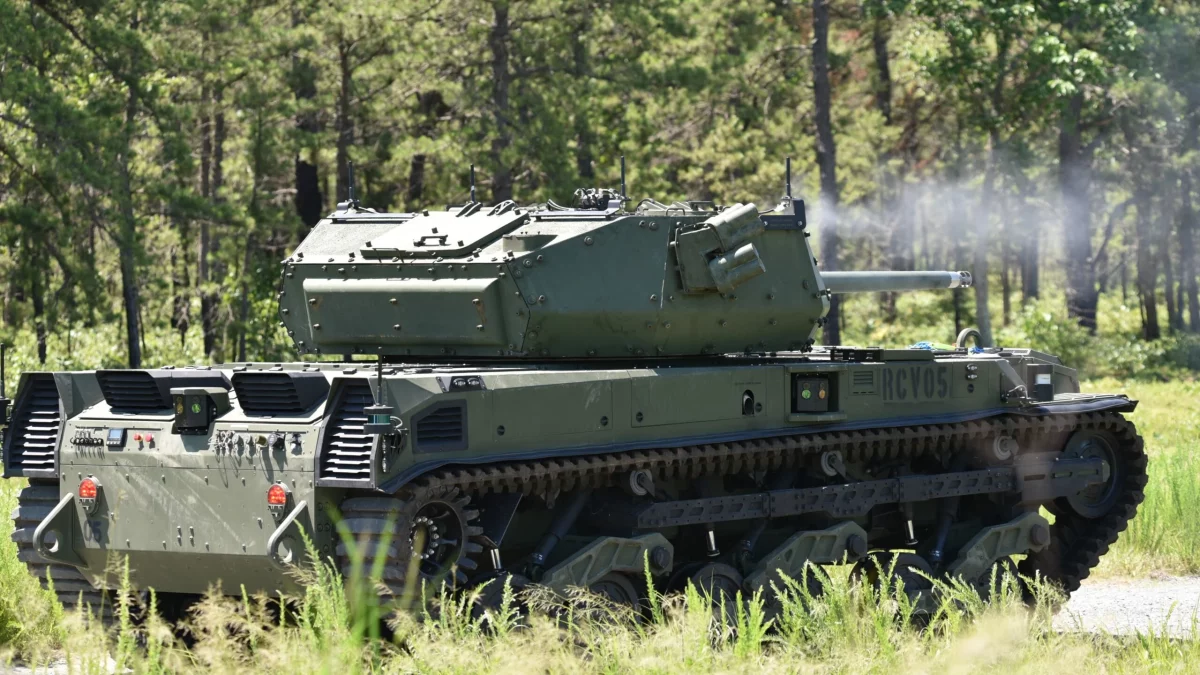
The vehicle is fully amphibious, being propelled in the water by two waterjets mounted at the rear of the hull. Before entering the water, the trim vane is erected at the front of the vehicle, and the bilge pumps are switched on. The suspension is of the adjustable type, and the driver can adjust the suspension to suit the type of ground being crossed.
Variants
- BMP-3 reconnaissance, called BRM, Rys (Lynx)
- BMP-3 driver training vehicle
- BMP-3 recovery vehicle (BREM-L)
- BMP-3K command vehicle
- BMP-3 anti-tank
- BMP-3 chassis can be used for a wide range of other roles.
- BREhM-L: Armored recovery vehicle (ARV).
- BRM-3K: Combat recon vehicle with radar and 30-mm gun.
- BMP-3: UAE upgrade improvements, including Namut Thermal Night sight.
- 9P157: ATGM launcher vehicle, with Krizantema (AT-15) ATGM autoloader, MMW, and thermal fire control system.
In 1997, the PRC acquired a license to manufacture a BMP-3 combat compartment, which subsequently armed the Type 97 Chinese infantry fighting vehicles.
Status
In service with Armenia, Algeria, Azerbaijan, Cyprus, Indonesia, Iraq, Kuwait, Libya, Morocco, Nicaragua, Russia, Syria, Sri Lanka, South Korea, Turkmenistan, Ukraine, United Arab Emirates, and Venezuela.
Technical specifications
| Country of origin: | SSSR |
| Manufacturer: | Soviet state arsenals |
| Crew: | 3+7 |
| Armament: | 1 x 100 mm, 1 x 30 mm cannon (coaxial), 1 x 7.62mm MG (coaxial), 2 x 7.62 mm (Hull front, one either side), 2 x 3 smoke grenade dischargers |
| Ammunition: | 40 x 100 mm, 500 x 30 mm, 6,000 x 7.62 mm, 6 x ATGW |
| Length: | 7.14 m |
| Width: | 3.14 m |
| Height: | 2.30 m (turret roof) |
| Ground clearance: | 510 mm (see text) |
| Weight, combat: | 18,700 kg |
| Power-to-weight ratio: | 26.73 hp/tonne |
| Engine: | diesel developing 500 hp |
| Maximum road speed: | 70 km/h |
| Maximum water speed: | 10 km/h |
| Maximum road range: | 600 km |
| Fuel capacity: | not known |
| Fording: | Amphibious |
| Vertical obstacle: | 0.8 m |
| Trench: | 2.5 m |
| Gradient: | 60% |
| Side slope: | 30% |
| Armor: | Classified |
| Armor type: | Steel |
| NBC system: | Yes |
| Night vision equipment: | Yes (commander, gunner, and driver) |
